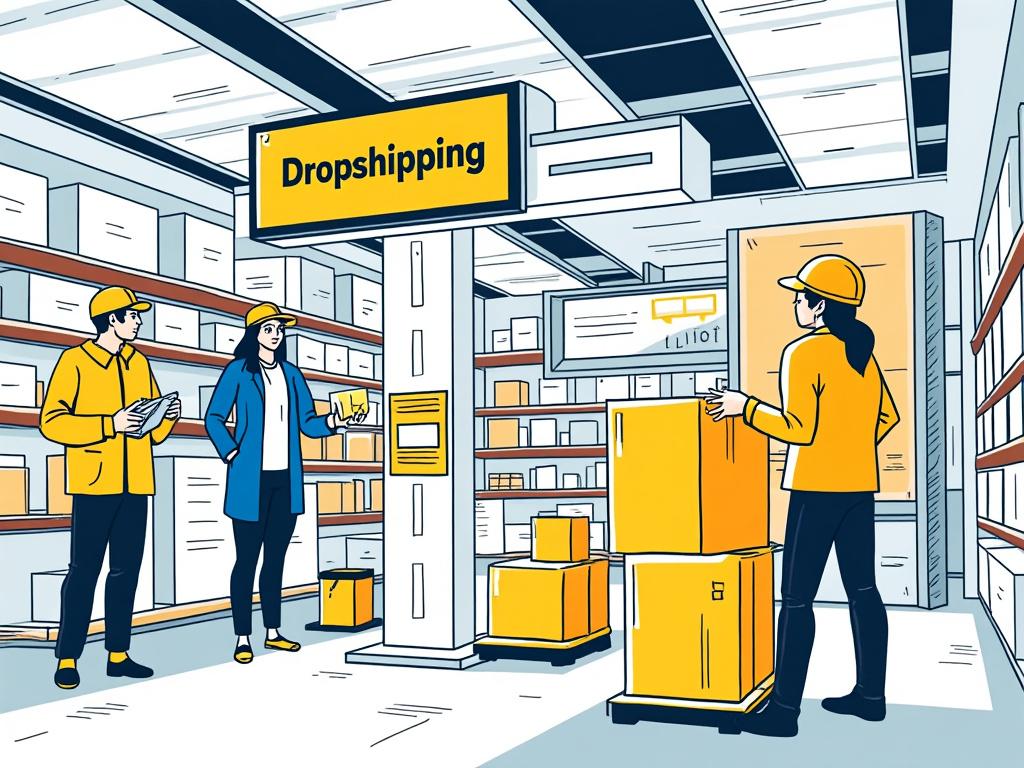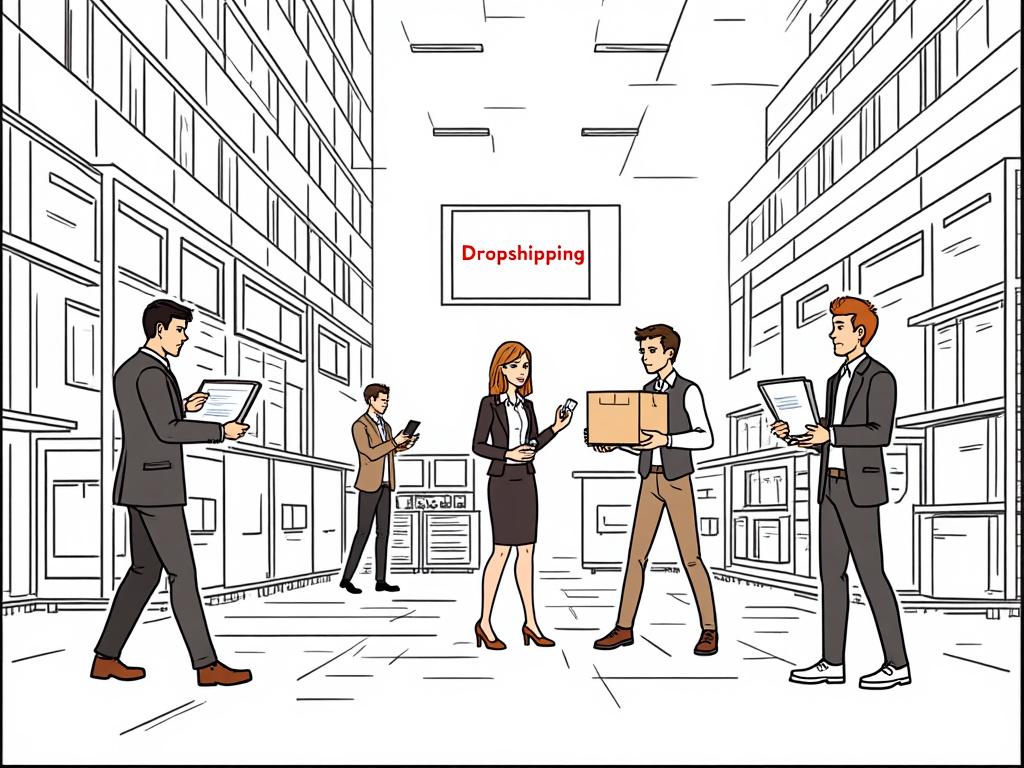
How to Start a Dropshipping Business in Dubai: Your Complete Guide to E-commerce Success in the UAE
Reading time: 12 minutes
Table of Contents
- Understanding the Dropshipping Model
- Why Dubai is Your E-commerce Gateway
- 9-Step Launch Strategy
- Legal Requirements and Compliance
- Investment Analysis
- Supplier Selection and Management
- Common Pitfalls and Solutions
- Frequently Asked Questions
- Your 30-Day Launch Roadmap
Understanding the Dropshipping Model
Ever wondered how some entrepreneurs build six-figure businesses without ever touching inventory? Welcome to dropshipping—the retail fulfillment method that’s revolutionizing e-commerce across the Middle East.
Here’s the straight talk: Dropshipping eliminates traditional retail barriers by connecting you directly with suppliers who handle inventory and shipping. When a customer orders from your online store, you simply forward that order to your supplier, who ships directly to your customer. You keep the profit margin without the headaches of warehouse management, inventory investment, or shipping logistics.
Think of yourself as a digital middleman with serious profit potential. Recent data from the UAE E-commerce Market Report shows that dropshipping businesses in Dubai average 15-30% profit margins, significantly higher than traditional retail models that typically see 5-10% margins.
Why Dubai is Your E-commerce Gateway
Dubai isn’t just another business destination—it’s a strategic launchpad for global e-commerce success. Here’s why smart entrepreneurs are choosing the Emirates:
Strategic Geographic Position
Dubai sits at the crossroads of Europe, Asia, and Africa, giving you access to over 2 billion consumers within a 4-hour flight radius. This positioning translates to faster shipping times and lower logistics costs for your international customers.
Business-Friendly Environment
The UAE offers zero corporate tax for qualifying businesses, 100% foreign ownership in free zones, and streamlined business registration processes. According to the World Bank’s Ease of Doing Business report, the UAE ranks 16th globally, making it one of the most entrepreneur-friendly jurisdictions in the region.
Growing Digital Consumer Base
With 99% internet penetration and one of the highest smartphone adoption rates globally, Dubai’s consumers are primed for online shopping. E-commerce sales in the UAE are projected to reach $9.2 billion by 2025, representing a compound annual growth rate of 12.7%.
9-Step Launch Strategy
Step 1: Identify Your Profitable Niche
Successful dropshipping starts with niche selection, not product hunting. Focus on markets where you can add genuine value through expertise, curation, or customer service.
Pro Tip: Use Google Trends and social media insights to identify emerging product categories in the MENA region. Popular niches in Dubai include fitness equipment, home automation, modest fashion, and eco-friendly products.
Step 2: Conduct Strategic Market Research
Before investing time and money, validate your niche through comprehensive market analysis:
- Analyze competitor pricing and customer reviews
- Identify gaps in current market offerings
- Study local consumer behavior patterns
- Assess seasonal demand fluctuations
Step 3: Source Reliable Suppliers
Your supplier relationship determines your business success. Here’s your evaluation framework:
Supplier Quality Scorecard
85%
70%
90%
60%
Step 4: Navigate Business Registration
Dubai offers multiple business setup options. For dropshipping, consider these structures:
| Business Type | Initial Cost (AED) | Processing Time | Best For |
|---|---|---|---|
| Dubai Internet City | 15,000 – 25,000 | 7-10 days | Tech-focused businesses |
| RAKEZ Free Zone | 8,000 – 15,000 | 5-7 days | Cost-conscious startups |
| Dubai CommerCity | 12,000 – 20,000 | 7-14 days | E-commerce specialists |
| Mainland License | 20,000 – 35,000 | 14-21 days | Local market focus |
Step 5: Build Your Digital Storefront
Your website is your business. Choose platforms that offer flexibility, scalability, and local payment integration. Popular options include Shopify, WooCommerce, and regional solutions like Salla or Zid that cater specifically to Middle Eastern markets.
Step 6: Integrate Payment Solutions
Payment gateway selection can make or break your conversion rates. In Dubai, consider these trusted options:
- PayFort (Amazon Payment Services): Dominant in MENA with local acquiring
- Network International: Strong regional presence and competitive rates
- Telr: User-friendly interface with multi-currency support
- 2Checkout: Global reach with local payment methods
Step 7: Develop Your Marketing Strategy
Digital marketing in Dubai requires cultural sensitivity and platform diversity. Focus on:
- Instagram and TikTok for younger demographics
- Facebook for broader audience reach
- Google Ads with Arabic keyword optimization
- Influencer partnerships with regional micro-influencers
Step 8: Launch with Soft Testing
Before going full-scale, test your systems with a limited product range and marketing budget. This approach helps you identify operational issues without significant financial exposure.
Step 9: Scale Through Data-Driven Optimization
Monitor key performance indicators including conversion rates, customer acquisition costs, and lifetime value. Use tools like Google Analytics, Facebook Pixel, and heat mapping software to understand customer behavior and optimize accordingly.
Legal Requirements and Compliance
Operating legally isn’t just about avoiding problems—it’s about building customer trust and long-term sustainability. Here’s your compliance roadmap:
Essential Licenses and Permits
Your business activities determine your licensing requirements. Most dropshipping businesses need an e-commerce license, which typically includes trading activities and online retail permissions.
VAT Registration
If your annual revenue exceeds AED 375,000, VAT registration becomes mandatory. However, voluntary registration can be beneficial for reclaiming input VAT on business expenses.
Consumer Protection Compliance
Dubai’s consumer protection laws require clear return policies, accurate product descriptions, and transparent pricing. Non-compliance can result in fines up to AED 100,000.
Investment Analysis
Let’s break down the realistic costs of launching your Dubai dropshipping venture:
Initial Setup Costs
- Business Registration: AED 8,000 – 35,000 (depending on jurisdiction)
- Website Development: AED 2,000 – 15,000
- Initial Marketing Budget: AED 5,000 – 20,000
- Legal and Administrative: AED 3,000 – 8,000
Monthly Operating Expenses
- License Renewal (amortized): AED 500 – 1,500
- Website Hosting and Apps: AED 200 – 800
- Marketing and Advertising: AED 3,000 – 15,000
- Virtual Office (if required): AED 800 – 2,000
Supplier Selection and Management
Your supplier network is your competitive advantage. Here’s how to build relationships that drive profit:
Evaluation Framework
Beyond the obvious factors like price and quality, evaluate suppliers on communication responsiveness, flexibility during high-volume periods, and willingness to provide customized packaging or branding options.
Top Supplier Platforms for Dubai Entrepreneurs
- AliExpress: Largest selection but longer shipping times
- Oberlo: Seamless Shopify integration with automated order processing
- Spocket: Focus on US and EU suppliers for faster shipping
- SaleHoo: Vetted supplier directory with fraud protection
- Local UAE Suppliers: Emerging options for regional products
Managing Supplier Relationships
Successful dropshippers treat suppliers as business partners, not just vendors. Regular communication, prompt payments, and collaborative problem-solving create mutually beneficial relationships that can provide competitive advantages like priority handling during busy seasons or exclusive product access.
Common Pitfalls and Strategic Solutions
Challenge 1: Shipping Times and Customer Expectations
The Problem: International shipping can take 7-21 days, while customers expect Amazon-like speed.
The Solution: Set clear expectations upfront, offer expedited shipping options, and provide detailed tracking information. Consider partnering with suppliers who have regional warehouses or fulfillment centers.
Challenge 2: Quality Control Without Physical Inventory
The Problem: You can’t inspect products before they reach customers, leading to potential quality issues.
The Solution: Order samples of all products you plan to sell, establish clear quality standards with suppliers, and develop a responsive customer service system for handling complaints.
Challenge 3: Market Saturation and Competition
The Problem: Popular dropshipping products quickly become oversaturated with competitors.
The Solution: Focus on building brand identity, providing superior customer service, and continuously innovating your product offerings. Consider private labeling or working with suppliers to develop exclusive products.
Frequently Asked Questions
Is dropshipping legal in Dubai and the UAE?
Yes, dropshipping is completely legal in Dubai and throughout the UAE. However, you must obtain proper business licensing, register for VAT if applicable, and comply with consumer protection regulations. The key is operating transparently and maintaining proper business documentation.
How much capital do I realistically need to start a dropshipping business in Dubai?
You can start with as little as AED 15,000-20,000 for basic setup in a free zone, including licensing, website development, and initial marketing. However, having AED 30,000-50,000 provides more flexibility for marketing campaigns and operational expenses during the initial months while you build revenue.
Can I run a dropshipping business from Dubai while targeting international customers?
Absolutely. Dubai’s strategic location and business-friendly policies make it an excellent base for serving global markets. Many successful dropshippers use Dubai as their business headquarters while targeting customers in Europe, North America, and other Middle Eastern countries. Just ensure your business license covers international trading activities.
Your 30-Day Launch Roadmap
Ready to transform your dropshipping vision into reality? Here’s your actionable roadmap for the next 30 days:
Week 1: Foundation Building
- Days 1-2: Complete niche research and competitor analysis
- Days 3-4: Identify and contact potential suppliers
- Days 5-7: Choose business setup option and begin registration process
Week 2: Digital Infrastructure
- Days 8-10: Set up your e-commerce platform and payment gateways
- Days 11-12: Order product samples and create initial product listings
- Days 13-14: Develop brand identity and basic marketing materials
Week 3: Legal and Operational Setup
- Days 15-17: Complete business registration and obtain necessary licenses
- Days 18-19: Set up business banking and accounting systems
- Days 20-21: Create standard operating procedures for order processing
Week 4: Launch Preparation
- Days 22-24: Conduct thorough testing of your website and order process
- Days 25-26: Launch initial marketing campaigns and social media presence
- Days 27-28: Go live with soft launch to friends and family
- Days 29-30: Analyze initial results and optimize for full public launch
Future-Proofing Your Dubai Dropshipping Venture
The e-commerce landscape is evolving rapidly, with artificial intelligence, augmented reality, and social commerce reshaping how consumers shop. Your Dubai-based dropshipping business sits at the intersection of these global trends and regional opportunities.
Consider how emerging technologies like voice commerce and social media shopping features will impact your strategy. The businesses that thrive in the next decade won’t just be those that execute today’s playbook perfectly—they’ll be the ones that anticipate tomorrow’s opportunities.
Your next step: Which of these 30 action items will you tackle first? Remember, the difference between dreamers and entrepreneurs isn’t the size of their vision—it’s their willingness to take the first concrete step toward making it reality.

Article reviewed by Emma van der Berg, Sustainability Analyst | Researching Green Energy Projects, on June 16, 2025
